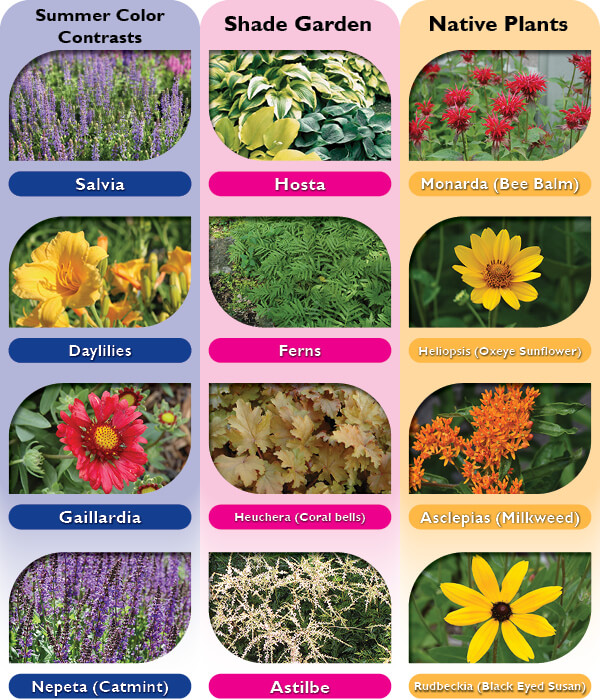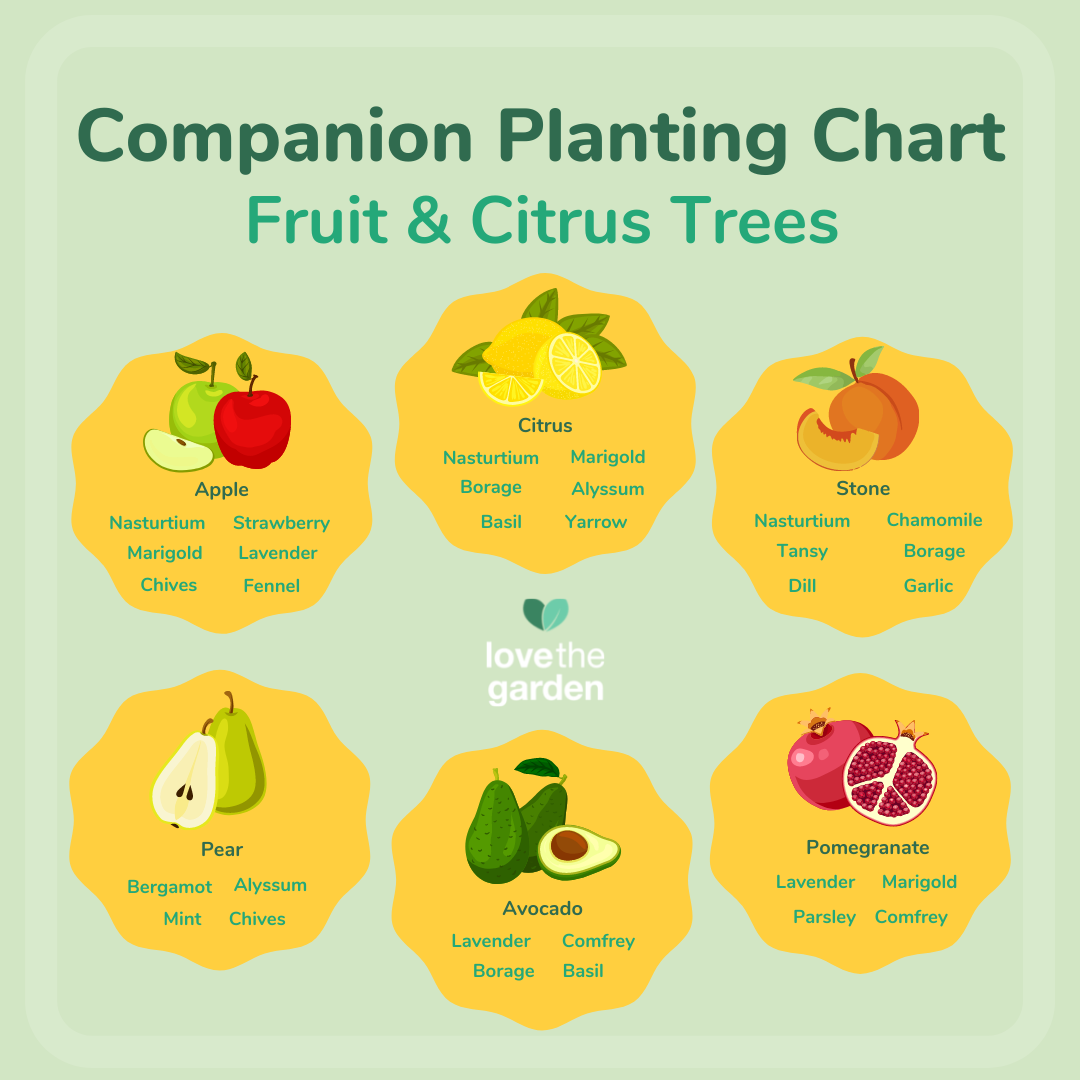Garden Plant Compatibility Chart: The Ultimate Guide To Growing Healthy Productive Plants
Garden Plant Compatibility Chart: The Ultimate Guide to Growing Healthy Productive Plants
Introduction
Growing a successful garden takes more than just planting seeds and watering them regularly. It's also important to understand the principles of companion planting, which is the practice of planting certain plants together to benefit each other.
Companion planting can help to improve the health, productivity, and pest resistance of your plants. It can also help to attract beneficial insects and pollinators to your garden.
In this blog post, we will discuss the basics of companion planting and provide you with a comprehensive garden plant compatibility chart. We will also share some tips for using companion planting to create a healthy and productive garden.
What is Companion Planting?
Companion planting is the practice of planting certain plants together to benefit each other. There are many different ways to companion plant, but some of the most common benefits include:
- Attracting beneficial insects and pollinators. Many plants attract beneficial insects and pollinators, which can help to control pests and improve pollination. For example, marigolds attract ladybugs, which eat aphids.
- Decreasing the risk of pests and diseases. Some plants can help to deter pests and diseases. For example, mint deters aphids, and garlic deters many types of insects.
- Improving soil health. Some plants can help to improve soil health by fixing nitrogen or adding other nutrients. For example, beans fix nitrogen, and carrots help to break up compacted soil.
- Improving plant growth and productivity. Some plants can help to improve the growth and productivity of other plants. For example, basil improves the flavor of tomatoes, and nasturtiums deter pests that can damage beans.
How to Use a Garden Plant Compatibility Chart
A garden plant compatibility chart is a tool that can help you to choose the right plants to grow together. These charts typically list different plants and their compatibility with each other. Some charts also include information about the benefits of companion planting.
To use a garden plant compatibility chart, simply find the plants that you want to grow and see which ones are compatible with each other. You can also use the chart to find plants that will help to deter pests or diseases.
Tips for Using Companion Planting
- Do your research. Before you start companion planting, it's important to do your research and learn about the different plants that you want to grow. This will help you to choose the right plants for your climate and gardening style.
- Be flexible. Don't be afraid to experiment with different companion planting combinations. You may find that some plants work better together than others.
- Pay attention to your plants. As you're growing your plants, pay attention to how they're doing. If you notice any problems, you can adjust your companion planting accordingly.
Conclusion
Companion planting is a great way to improve the health, productivity, and pest resistance of your garden. By using a garden plant compatibility chart and following these tips, you can create a thriving garden that will be a source of joy for years to come.
Are you looking for a way to improve the health and productivity of your garden? If so, you should consider using companion planting. Companion planting is the practice of planting different plants together for mutual benefit. Some plants can help to deter pests, attract pollinators, or improve the soil quality.
If you're not sure which plants are compatible, you can visit Garden Wiki for a comprehensive garden plant compatibility chart. This chart lists which plants make good companions for each other, as well as which plants should be avoided.
FAQ of garden plant compatibility chart
- What is a garden plant compatibility chart?
A garden plant compatibility chart is a guide that shows which plants can be grown together in the same garden space. It can help you to choose plants that will complement each other, and avoid plants that will compete for resources or attract pests.
- How do I use a garden plant compatibility chart?
To use a garden plant compatibility chart, first identify the plants that you want to grow in your garden. Then, look up these plants on the chart to see which other plants they are compatible with. You can also use the chart to see which plants should be avoided.
- What are the benefits of using a garden plant compatibility chart?
There are several benefits to using a garden plant compatibility chart. First, it can help you to create a more productive garden by choosing plants that will complement each other. Second, it can help you to avoid problems with pests and diseases by avoiding plants that are susceptible to the same problems. Third, it can help you to create a more attractive garden by choosing plants that will look good together.
- What are some of the most compatible plant combinations?
Some of the most compatible plant combinations include:
* Basil and tomatoes
* Marigolds and tomatoes
* Carrots and leeks
* Lavender with carrots and leeks
* Wormwood and beans
* Calendula and beans
* Sage and brassicas
* Borage and strawberries
- What are some of the least compatible plant combinations?
Some of the least compatible plant combinations include:
* Beans and onions
* Corn and tomatoes
* Cucumbers and melons
* Eggplant and potatoes
* Peas and beans
* Spinach and strawberries
- How can I find a garden plant compatibility chart?
There are several ways to find a garden plant compatibility chart. You can find them online, in gardening books, or at your local nursery.
Image of garden plant compatibility chart
Edible Plant Companion Chart
 This chart shows which edible plants can be grown together and which should be avoided. It is a great resource for gardeners who want to create a productive and harmonious garden.
This chart shows which edible plants can be grown together and which should be avoided. It is a great resource for gardeners who want to create a productive and harmonious garden.Herb Companion Chart
 This chart shows which herbs can be grown together and which should be avoided. It is a great resource for gardeners who want to create a flavorful and aromatic herb garden.
This chart shows which herbs can be grown together and which should be avoided. It is a great resource for gardeners who want to create a flavorful and aromatic herb garden.Flower Companion Chart
 This chart shows which flowers can be grown together and which should be avoided. It is a great resource for gardeners who want to create a beautiful and colorful flower garden.
This chart shows which flowers can be grown together and which should be avoided. It is a great resource for gardeners who want to create a beautiful and colorful flower garden.Shrub Companion Chart
 This chart shows which shrubs can be grown together and which should be avoided. It is a great resource for gardeners who want to create a lush and shady shrub border.
This chart shows which shrubs can be grown together and which should be avoided. It is a great resource for gardeners who want to create a lush and shady shrub border.Tree Companion Chart
 This chart shows which trees can be grown together and which should be avoided. It is a great resource for gardeners who want to create a stately and majestic tree grove.
This chart shows which trees can be grown together and which should be avoided. It is a great resource for gardeners who want to create a stately and majestic tree grove.Ornamental Grass Companion Chart
 This chart shows which ornamental grasses can be grown together and which should be avoided. It is a great resource for gardeners who want to create a graceful and elegant ornamental grass garden.
This chart shows which ornamental grasses can be grown together and which should be avoided. It is a great resource for gardeners who want to create a graceful and elegant ornamental grass garden.Vine Companion Chart
This chart shows which vines can be grown together and which should be avoided. It is a great resource for gardeners who want to create a lush and climbing vine wall.
Succulent Companion Chart
 This chart shows which succulents can be grown together and which should be avoided. It is a great resource for gardeners who want to create a drought-tolerant and colorful succulent garden.
This chart shows which succulents can be grown together and which should be avoided. It is a great resource for gardeners who want to create a drought-tolerant and colorful succulent garden.Water Garden Plant Compatibility Chart
This chart shows which water garden plants can be grown together and which should be avoided. It is a great resource for gardeners who want to create a thriving and beautiful water garden.
Container Plant Compatibility Chart
 This chart shows which container plants can be grown together and which should be avoided. It is a great resource for gardeners who want to create a stylish and functional container garden.
This chart shows which container plants can be grown together and which should be avoided. It is a great resource for gardeners who want to create a stylish and functional container garden.
Post a Comment for "Garden Plant Compatibility Chart: The Ultimate Guide To Growing Healthy Productive Plants"